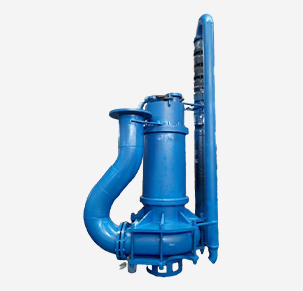Czech
- Afrikaans
- Albanian
- Amharic
- Arabic
- Armenian
- Azerbaijani
- Basque
- Belarusian
- Bengali
- Bosnian
- Bulgarian
- Catalan
- Cebuano
- Corsican
- Croatian
- Czech
- Danish
- Dutch
- English
- Esperanto
- Estonian
- Finnish
- French
- Frisian
- Galician
- Georgian
- German
- Greek
- Gujarati
- Haitian Creole
- hausa
- hawaiian
- Hebrew
- Hindi
- Miao
- Hungarian
- Icelandic
- igbo
- Indonesian
- irish
- Italian
- Japanese
- Javanese
- Kannada
- kazakh
- Khmer
- Rwandese
- Korean
- Kurdish
- Kyrgyz
- Lao
- Latin
- Latvian
- Lithuanian
- Luxembourgish
- Macedonian
- Malgashi
- Malay
- Malayalam
- Maltese
- Maori
- Marathi
- Mongolian
- Myanmar
- Nepali
- Norwegian
- Norwegian
- Occitan
- Pashto
- Persian
- Polish
- Portuguese
- Punjabi
- Romanian
- Russian
- Samoan
- Scottish Gaelic
- Serbian
- Sesotho
- Shona
- Sindhi
- Sinhala
- Slovak
- Slovenian
- Somali
- Spanish
- Sundanese
- Swahili
- Swedish
- Tagalog
- Tajik
- Tamil
- Tatar
- Telugu
- Thai
- Turkish
- Turkmen
- Ukrainian
- Urdu
- Uighur
- Uzbek
- Vietnamese
- Welsh
- Bantu
- Yiddish
- Yoruba
- Zulu
Telephone: +86 13120555503
Email: frank@cypump.com
Zář . 22, 2024 15:33 Back to list
pump pipeline system analysis and design
Analysis and Design of Pump Pipeline Systems
The efficient transport of fluids is crucial in various industries, including oil and gas, water treatment, and manufacturing. A pivotal component of these systems is the pump pipeline system, designed to move fluids from one point to another with reliability and efficiency. This article explores the analysis and design considerations essential for optimal pump pipeline systems.
Understanding the Pump Pipeline System
A pump pipeline system consists of several key elements, including pumps, pipelines, valves, fittings, and tanks. The primary function of this system is to ensure smooth fluid flow, which requires careful planning and design. The choice of pump technology and materials, along with pipeline layout and configuration, significantly impacts system performance and operational costs.
Factors Influencing System Performance
1. Fluid Properties The nature of the fluid being transported—such as viscosity, density, and temperature—plays a critical role in system design. These properties affect pump selection and sizing, as well as determining the type of pipeline materials used to prevent corrosion and wear.
2. Pipeline Configuration The layout of the pipeline, including length, diameter, and elevation changes, is crucial. Longer pipelines or those with larger diameter changes can create significant pressure losses due to friction. Proper calculation of head loss is essential for ensuring that the pump can maintain adequate flow rates.
3. Pump Selection Various types of pumps, such as centrifugal, positive displacement, and submersible pumps, serve different applications. Each pump type has distinct advantages and limitations based on the specific demands of the fluid and the system's requirements. Factors such as flow rate, pressure head, and energy efficiency must be considered when selecting a pump.
4. Control Systems Integrating automation and control systems can enhance the efficiency and reliability of pump pipeline systems. These systems help monitor performance metrics, manage flow rates, and detect anomalies in real-time, facilitating timely maintenance and reducing downtime.
pump pipeline system analysis and design

Design Considerations
A successful pump pipeline system design follows systematic steps, including
1. Needs Assessment Understanding the specific requirements of the fluid handling process is the first step. This includes evaluating flow rates, pressure needs, and how the system will interface with existing infrastructure.
2. Hydraulic Analysis Conducting a hydraulic analysis to evaluate flow dynamics within the pipeline is critical. This analysis allows engineers to predict pressure drops, optimize pump performance, and size components accurately.
3. Material Selection Choosing suitable materials is vital for enhancing the operational lifespan of the system. Considerations include compatibility with the fluids being transported, environmental factors, and the mechanical properties needed to withstand operating conditions.
4. Safety and Compliance Ensuring adherence to industry standards and regulations is non-negotiable. Safety measures, including pressure relief valves and emergency shut-off systems, should be integrated into the design to minimize risk.
Conclusion
The analysis and design of pump pipeline systems are complex tasks that require a multidisciplinary approach. By considering fluid properties, system configuration, pump selection, and safety standards, engineers can design robust systems that meet the demands of various industries. Ultimately, thorough planning and advanced design techniques can lead to increased efficiency, reduced costs, and enhanced operational reliability in fluid transportation.
-
ISG Series Vertical Pipeline Pump - Chi Yuan Pumps Co., LTD.|High Efficiency, Energy Saving, Low Noise
NewsJul.30,2025
-
ISG Series Vertical Pipeline Pump- Chi Yuan Pumps|High Efficiency&Low Noise
NewsJul.30,2025
-
ISG Series Vertical Pipeline Pump-Chi Yuan Pumps Co., LTD.|High Efficiency&Energy Conservation
NewsJul.30,2025
-
ISG Series Vertical Pipeline Pump - Chi Yuan Pumps Co., LTD.|Advanced Hydraulic Design&Energy-Efficient Solutions
NewsJul.30,2025
-
ISG Series Vertical Pipeline Pump - Chi Yuan Pumps Co., LTD.
NewsJul.30,2025
-
ISG Series Vertical Pipeline Pump - Chi Yuan Pumps Co., LTD.|energy-efficient fluid handling&industrial durability
NewsJul.30,2025










